One of the best art/design exhibit I've seen lately is called "Dissident Futures" and it's currently at the Yerba Buena Center for the Arts. Curated by Betti-Sue Hertz, YBCA’s Director of Visual Art, it's described on their website as "an investigation into possible alternative futures, particularly those that question or overturn conventional notions of innovation in biological, social, environmental, and technological structures." The exhibit is made of a wide range of pieces based on photography, painting, installation, performance, sculpture, video and film. Operating as an echo of the innovation-focus of the Bay Area, each of these corresponds to three main topics:
- the utopian: "scenarios in which the best possible outcomes are achieved for the greatest number of people"
- the speculative: "consistently pushing beyond the known, even beyond existing systems of logic to locate potentialities that may seem impossible, unreal, or fantastical at the moment."
- the pragmatic: "groundwork for what the future will look like in the real world"
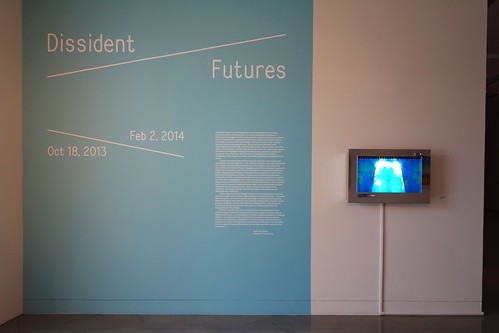
Some of the projects described there caught my attention for different reasons.
Paul Laffoley's diagrams (dataviz?) feature planes of higher consciousness or act as a mediation aids; they can be seen as utopian worldviews with a strikingly curious spin: 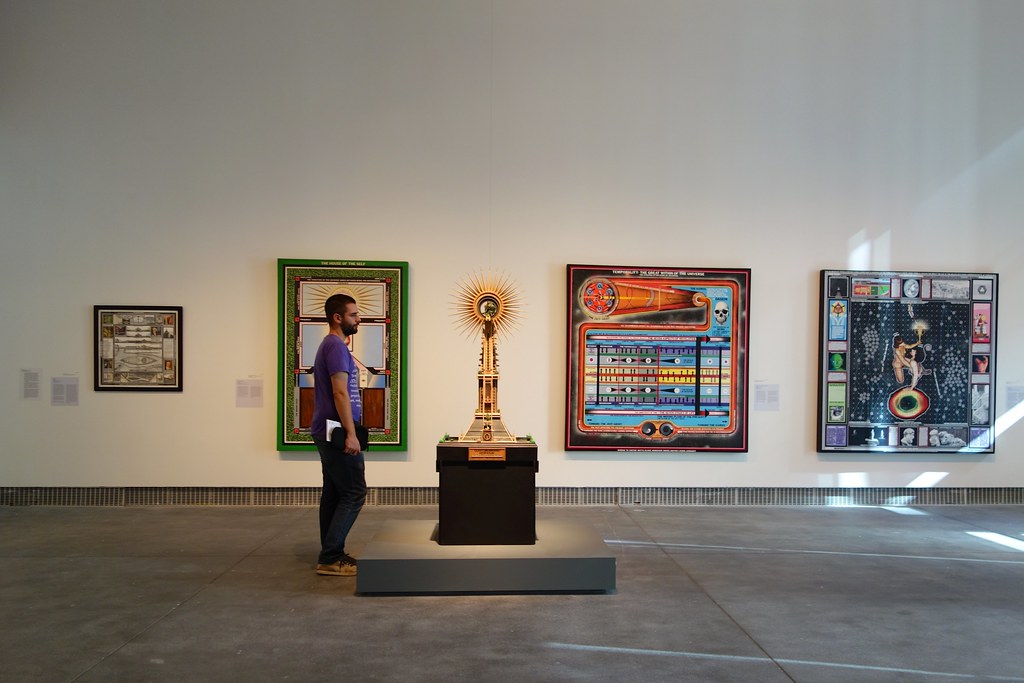
Some of the best piece IMHO are the ones from Basim Magdy, an Egyptian artist living in Switzerland. His fabulous series of pictures (called "Investigating the Color Spectrum of a Post-Apocalyptic Future Landscape") correspond to a stunning representation of how what Science-Fiction should be in my opinion: entanglements between the real and the fictional, between the actual and the virtual... with a peculiar and magical aesthetic. Trevor Paglen's work was also impressive and among similar lines. 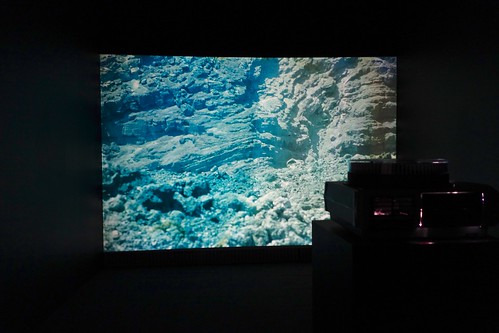
Also, Magdy's series of paintings offer a compelling representation of the future with a representations that may look tongue-in-cheek at first glance... and far more serious when observed longer.  I found Katie Peterson's Moonlight Sonata very subtle: "For this work Beethoven's Moonlight Sonata was translated into morse code and sent to the moon via E.M.E. Returning to earth fragmented by the moon's surface, it has been re-translated into a new score, the gaps and absences becoming intervals and rests. In the exhibition space the new 'moon–altered' score plays on a self-playing grand piano."... which leads to these beautiful framed morse scores:
I found Katie Peterson's Moonlight Sonata very subtle: "For this work Beethoven's Moonlight Sonata was translated into morse code and sent to the moon via E.M.E. Returning to earth fragmented by the moon's surface, it has been re-translated into a new score, the gaps and absences becoming intervals and rests. In the exhibition space the new 'moon–altered' score plays on a self-playing grand piano."... which leads to these beautiful framed morse scores: 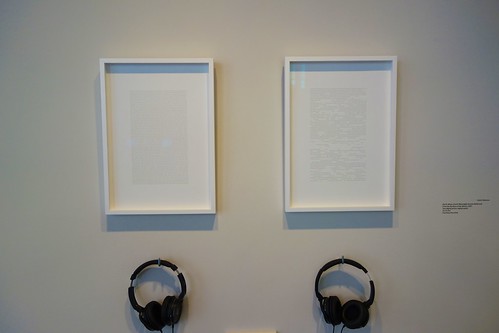
Peter Coffin's video of flying fruits was also fantastic. This short film made of fruits flying through a black void has a mesmerizing effect... an impressive representation of how the ordinary can become intriguing and original when observed with a different viewpoint. 
The series of pieces by Future Cities Lab were quite convincing, especially the colonisation of the now defunct part of Bay Bridge with suspended habitations/gardens/aquaponic farms: 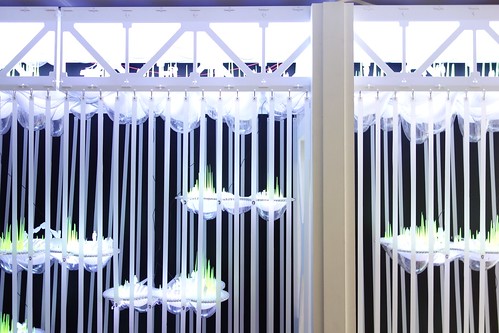
Finally, Revital Cohen and Tuur van Balen's 75 Watts project was also revealing in the sense that it ironically frames mass-manufacturing products: "Engineering logic has reduced the factory labourer to a man-machine, through scientific management of every single movement. By shifting the purpose of the labourer's actions from the efficient production of objects to the performance of choreographed acts, mechanical movement is reinterpreted into the most human form of motion: dance. What is the value of this artefact that only exists to support the performance of its own creation? And as the product dictates the movement, does it become the subject, rendering the worker the object?" 
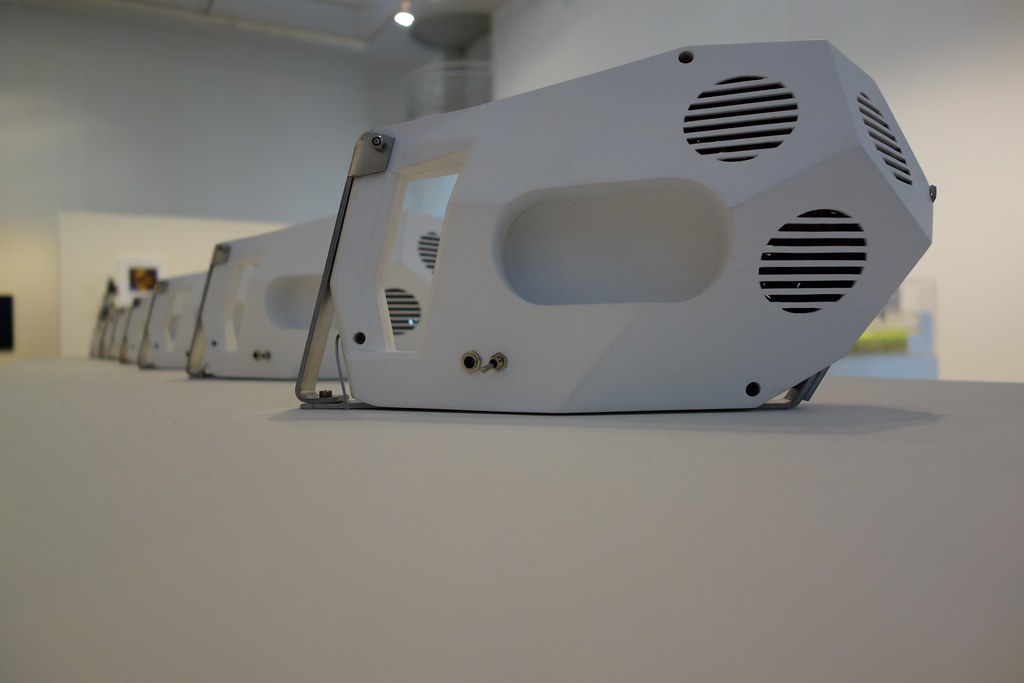
Why do I blog this? I see this show as part of a much larger series of exhibit focused on "the future"... with an interesting and aesthetically-convincing series of weak signals about the possible, the potential and the virtual. The pieces presented here look far more intriguing than what Scifi produces and better frame the discussion about tomorrow's paths. I'm definitely looking forward to reading the book which is planned to be published by the end of the year.